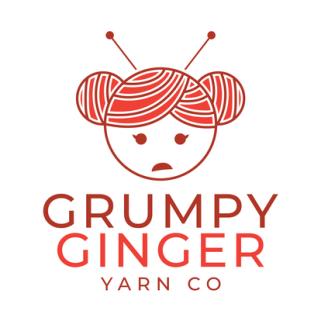The textiles, yarn, and fabrics industry is undergoing rapid transformation, driven by emerging markets and key trends that are reshaping its landscape. In 2024, businesses must stay informed about these developments to remain competitive. This blog explores the most significant trends, including sustainable practices, technological advancements, the rise of e-commerce, and changing consumer preferences. By understanding these trends and adapting strategies accordingly, companies can capitalize on new opportunities and navigate the challenges in this dynamic sector. Let's delve into the key trends shaping the textiles industry in 2024.
Sustainable and Eco-Friendly Practices
Sustainability is becoming increasingly important in the textiles industry. Companies are adopting eco-friendly practices to meet consumer demands and regulatory requirements.
• Recycled Materials:
More companies are using recycled materials in their products, reducing waste and conserving resources. For instance, recycled polyester made from plastic bottles is gaining popularity.
• Natural Fibers:
The use of natural fibers like organic cotton, hemp, and bamboo is on the rise. These materials are biodegradable and have a lower environmental impact compared to synthetic fibers.
• Water Conservation:
Innovative technologies are being developed to reduce water usage in textile production. Techniques like waterless dyeing and efficient wastewater treatment are becoming standard practices.
• Energy Efficiency:
Companies are investing in energy-efficient machinery and renewable energy sources to reduce their carbon footprint.
Technological Advancements
Technology is transforming the textiles, yarn, and fabrics industry, making production more efficient and innovative.
• Smart Textiles:
Smart textiles, or e-textiles, are embedded with sensors and electronics. These textiles can monitor health, track fitness, and even change color based on the environment.
• 3D Printing:
3D printing technology is being used to create intricate fabric designs and prototypes. This allows for more customization and faster production times.
• Automation and AI:
Automation and artificial intelligence (AI) are streamlining manufacturing processes. Robots and AI systems can handle tasks like fabric cutting, sewing, and quality control, reducing labor costs and increasing precision.
• Blockchain Technology:
Blockchain is being used to ensure transparency and traceability in the supply chain. This technology helps in verifying the authenticity of materials and ensuring ethical production practices.
Rise of E-Commerce and Digital Platforms
The growth of e-commerce and digital platforms is changing how textiles and fabrics are marketed and sold.
• Online Marketplaces:
Online marketplaces like Alibaba and Amazon are becoming key channels for textile sales. These platforms allow businesses to reach a global audience and simplify transactions.
• Social Media Marketing:
Social media platforms like Instagram and Pinterest are powerful tools for marketing textiles and fabrics. Companies can showcase their products, engage with customers, and drive sales through targeted advertising.
• Virtual Showrooms:
Virtual showrooms and online catalogs are becoming popular. These digital platforms allow buyers to view and purchase textiles without the need for physical samples.
• Data Analytics:
E-commerce platforms provide valuable data on consumer preferences and buying behavior. Companies can use this data to tailor their products and marketing strategies.
Globalization and Emerging Markets
Emerging markets are playing a significant role in the growth of the textiles industry.
• Asia-Pacific Region:
Countries like China, India, and Bangladesh are leading textile producers. These countries offer competitive pricing and have established strong manufacturing infrastructures.
• Africa:
Africa is emerging as a new hub for textile production. Countries like Ethiopia and Kenya are attracting investments due to their favorable trade agreements and growing labor force.
• Latin America:
Latin American countries, including Brazil and Mexico, are also becoming important players in the textile market. These countries offer strategic locations for exporting to North America and Europe.
• Trade Agreements:
Free trade agreements and regional trade blocs, such as the African Continental Free Trade Area (AfCFTA), are facilitating easier market access and boosting textile exports.
Consumer Preferences and Customization
Consumer preferences are shifting towards more personalized and unique textile products.
• Customization:
Consumers are seeking customized products that reflect their personal >
• Fast Fashion:
The demand for fast fashion continues to grow. Consumers want trendy and affordable clothing, leading companies to focus on quick production cycles and rapid inventory turnover.
• Quality and Durability:
There is a rising demand for high-quality and durable textiles. Consumers are willing to pay a premium for products that last longer and maintain their appearance.
• Ethical Consumerism:
Consumers are becoming more conscious of ethical production practices. They prefer brands that prioritize fair labor practices and environmental sustainability.
Innovations in Textile Materials
New materials and innovations are driving growth in the textiles industry.
• High-Performance Fabrics:
High-performance fabrics, such as moisture-wicking, antimicrobial, and UV-protective textiles, are gaining popularity in sportswear and outdoor clothing.
• Biodegradable Fabrics:
Research is being conducted to develop biodegradable fabrics that break down naturally, reducing environmental impact. Innovations like mushroom leather and algae-based fabrics are promising developments.
• Nanotechnology:
Nanotechnology is being used to enhance fabric properties. Nanoparticles can improve fabric strength, stain resistance, and antibacterial properties.
• Revolutionary Fibers:
Innovations like spider silk, produced through synthetic biology, offer exceptional strength and flexibility. These revolutionary fibers have applications in both fashion and technical textiles.
Challenges and Opportunities
The textiles industry faces several challenges, but these also present opportunities for growth and innovation.
• Supply Chain Disruptions:
The COVID-19 pandemic highlighted vulnerabilities in global supply chains. Companies are now focusing on building more resilient and localized supply chains.
• Environmental Regulations:
Stricter environmental regulations are being implemented worldwide. Companies that adopt sustainable practices early will have a competitive advantage.
• Technological Integration:
Integrating new technologies can be costly and require specialized skills. However, companies that invest in technology will benefit from increased efficiency and innovation.
• Market Competition:
The textile market is highly competitive. Companies must differentiate themselves through quality, innovation, and customer service to succeed.
Conclusion
The textiles, yarn, and fabrics industry is evolving rapidly, driven by emerging markets and key trends. Sustainable practices, technological advancements, and the rise of e-commerce are reshaping the industry landscape. Additionally, globalization, shifting consumer preferences, and material innovations offer both challenges and opportunities. By understanding and adapting to these trends, businesses can position themselves for success in 2024 and beyond. Staying informed and proactive will enable companies to capitalize on the growing opportunities in the dynamic and competitive textiles sector.


